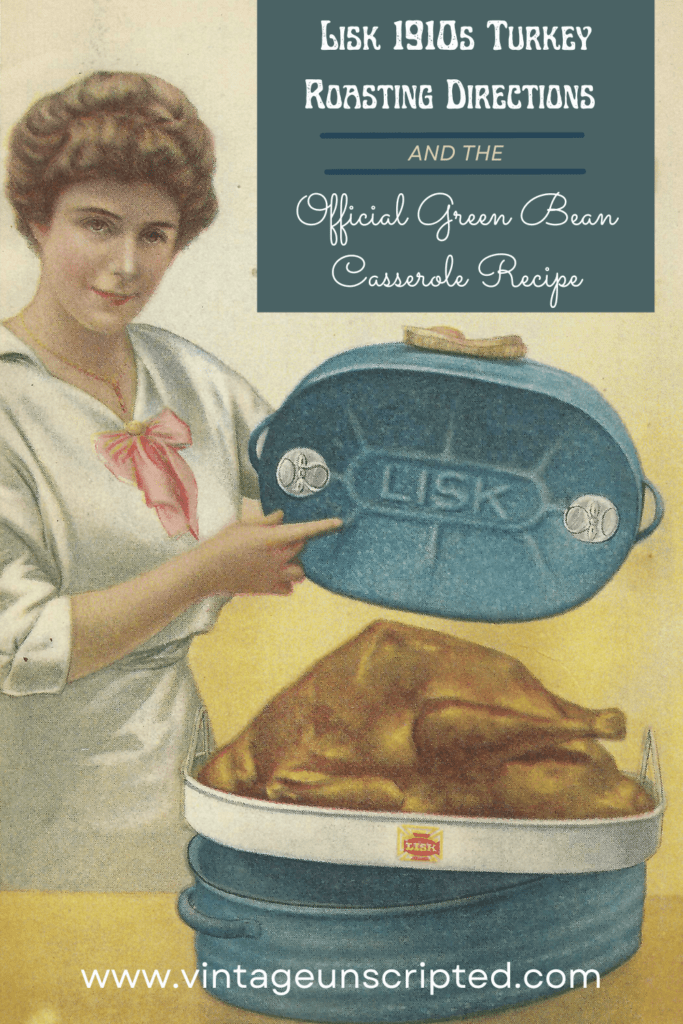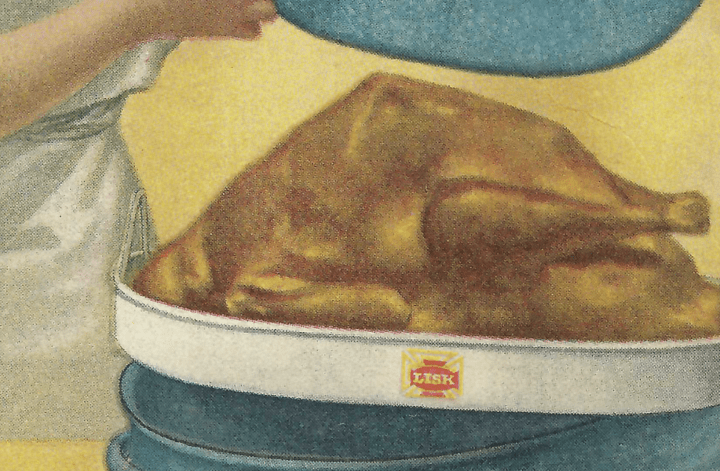If you are coming to our blog for turkey roasting directions or for a proper green bean casserole recipe on Thanksgiving Day, we’re quite honestly worried about your dinner plans. But we’re also here to support you with turkey roasting directions from the Lisk Manufacturers cookbooklet. Lisk is known for the much revered Lisk Self-Basting Roaster, if anyone knows how to roast a turkey, it’s them. The cookbooklet is undated, but based on the cover model’s clothing and a mention in the text of USDA Bulletin #391, which was published in 1917, it is likely from around the same time.
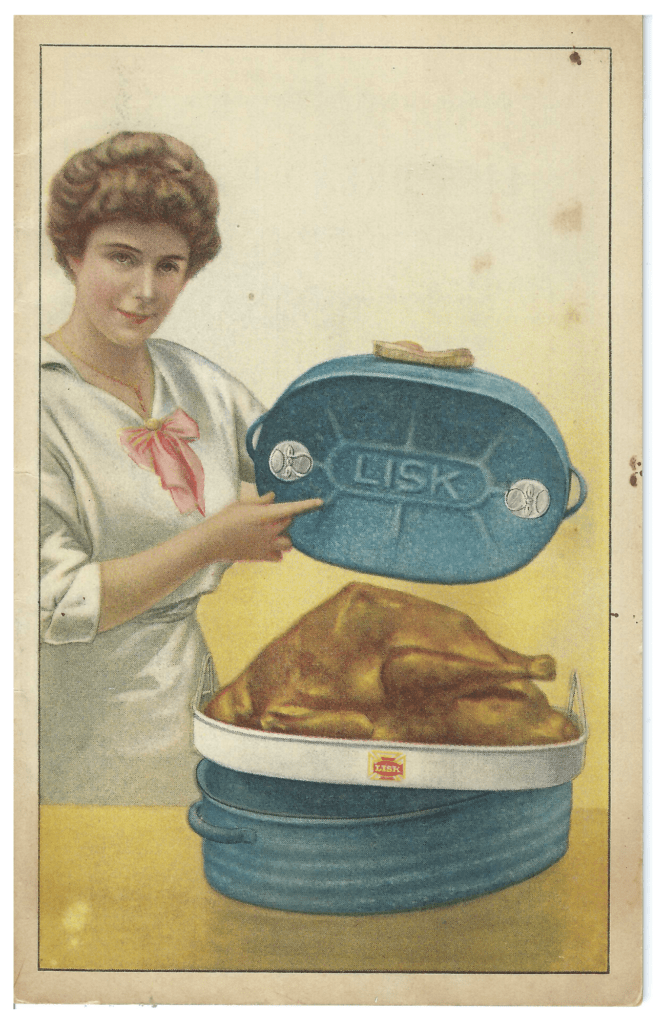
Lisk Manufacturers, located in Canandaigua, NY, produced the Imperial Gray enamel roaster in 1905, starting a roaster dynasty. Among roaster aficionados, vintage Lisks are still considered primo in the oven. Who wouldn’t want a roaster that will “give a material reduction in kitchen labor?”
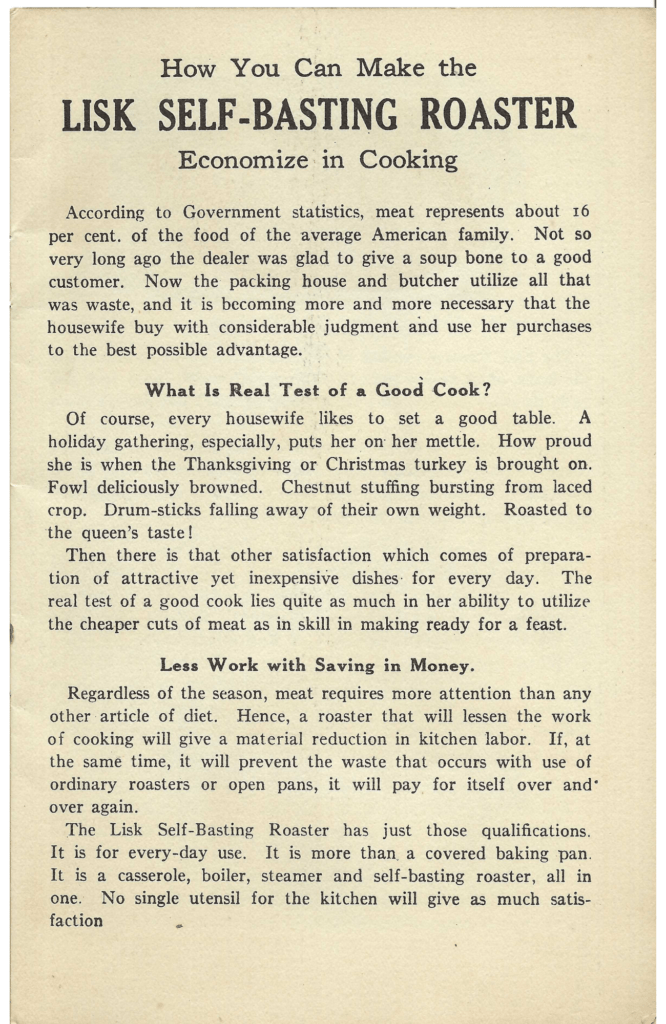
The Lisk advertising booklet spells out the benefits of a self basting roaster, of course. There are two dampers in the lid that control evaporation. According to the booklet, the evaporation is kept inside the roaster by closing the dampers. It collects on the inside of the lid and gravitates to the center where it drips down, basting whatever is being roasted.
You would expect an advertising booklet to wax eloquently about the benefits. But on at least one cooking chat board, consensus is that vintage Lisk still rocks the roaster game, and that internal tray is essential to diffuse the heat. There are lots of vintage and antique Lisk roasters available on eBay, but not all of them have the tray.
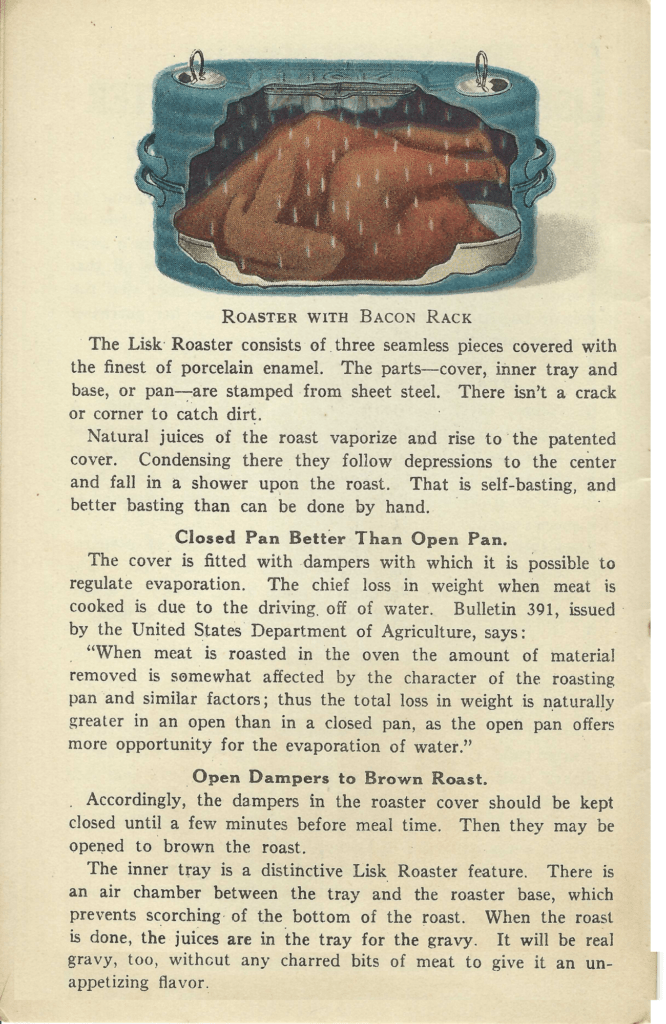
Lid damper management appears to be a key element of the turkey roasting directions. The dampers are closed until the very end when the cook can open them up “a few minutes before meal time” to brown the roast.
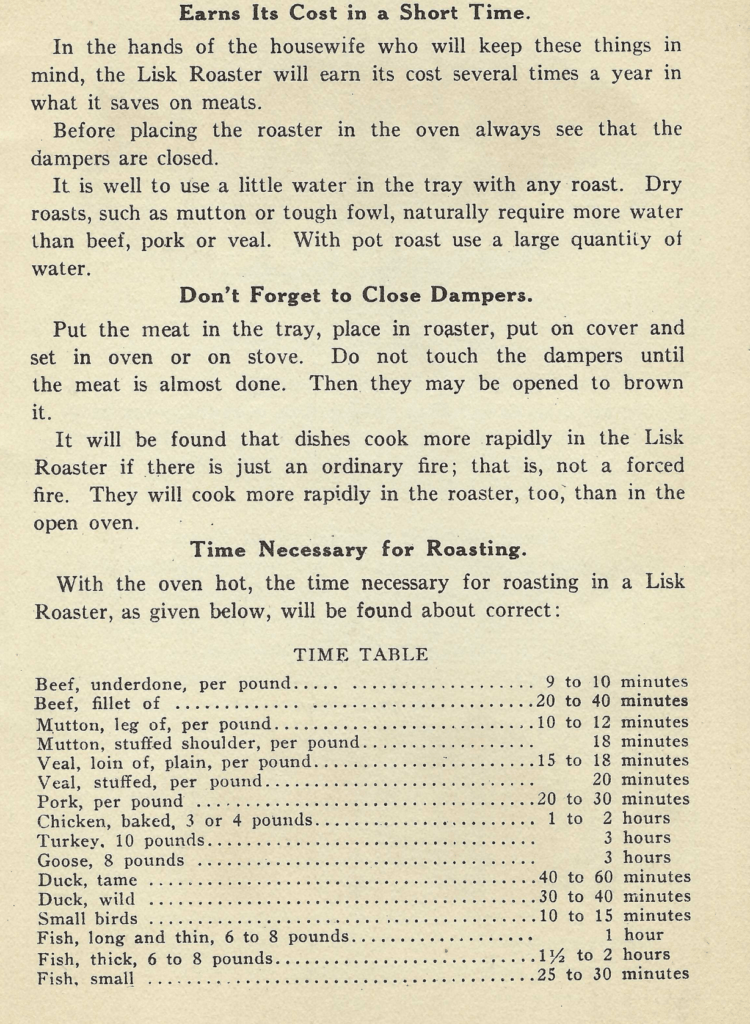
Finally, here are the actual turkey roasting directions as well as a stuffing recipe:
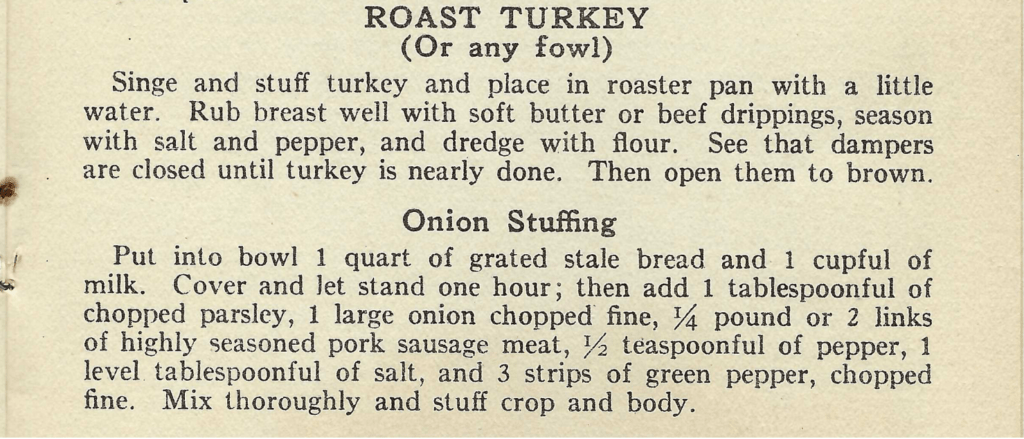
You don’t need to worry about the singe stuff, most likely. That is a step taken to burn the remaining feathers and tiny hairs off. Nowadays, it’s usually done with a kitchen torch. And I’ve not roasted many turkeys in my life, but I’ve never seen directions that specified dredging the greased up turkey in flour. Anyone familiar with that? Leave us a comment to educate us!
On a more serious note, if you’re looking for day-of-dinner turkey directions, we’re flattered you looked here, but maybe call or text the Butterball Turkey Talk-Line instead. We’re always stoked to give our advice, but maybe not today on this topic. You need some top level live turkey triage help and we’re better at telling you how to clean a vintage suitcase or identify McCoy pottery.
This post came to be because of an omen. I was moving my mother-in-law’s box of vintage recipes clipped from newspapers and magazines that lives at our house now, when out fell the tiniest and most perfect recipe for green bean casserole that ever has been. Overall. it measures less than 2″ x 2″. Based on the foil on the back and the wrinkles, it must have been cut from a can of Durkee French Fried Onions.
While I was cooing over it and telling it that it was special and precious, I remembered the Lisk advertising cookbooklet that has been haunting my product shots work area for the better part of a couple years. Clearly, the green bean casserole recipe appearing before me was an indication that both things had to be worked into a post immediately.
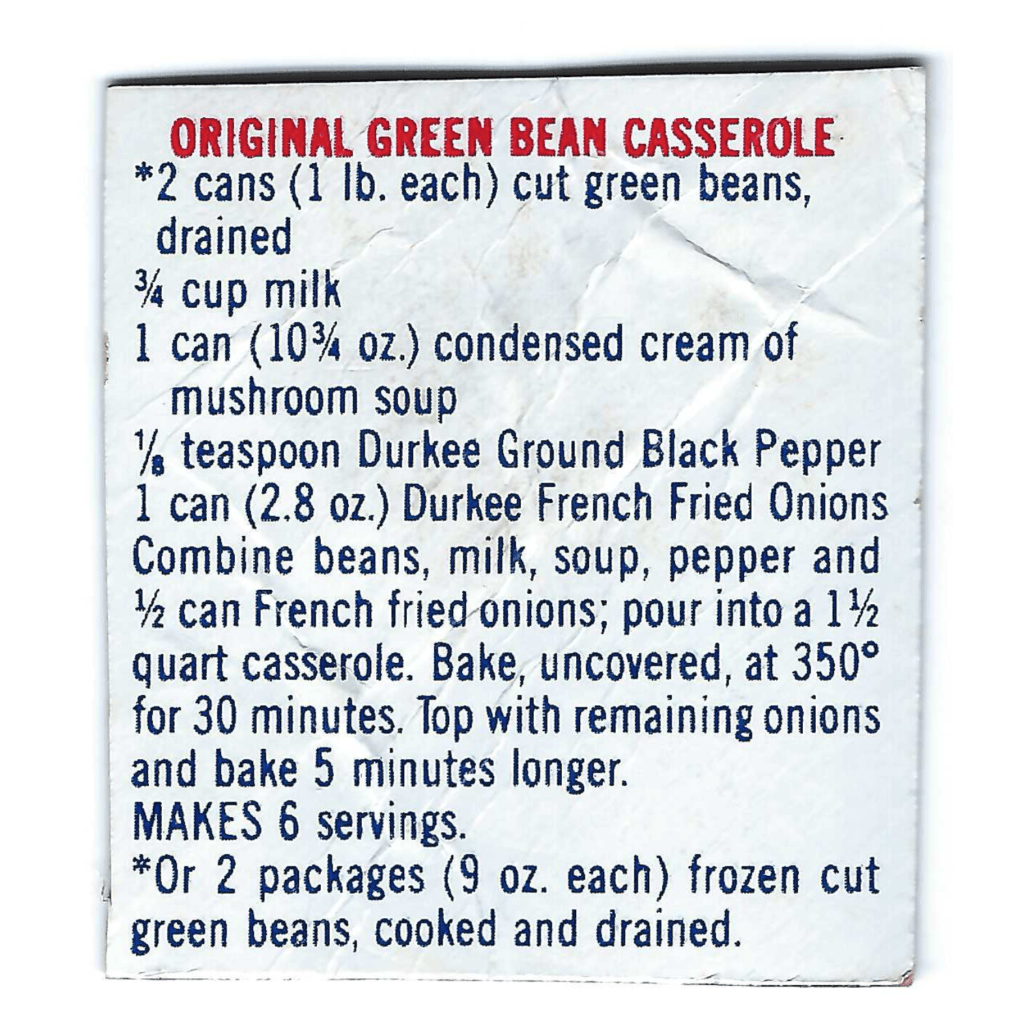
We hope your Thanksgiving gives you everything you need, whether that’s quiet time for reflection, joining a raucous crowd watching football or a day filled with family traditions. We are thankful for all our readers. You show up, you read, you comment and you make this whole passion project fun.
